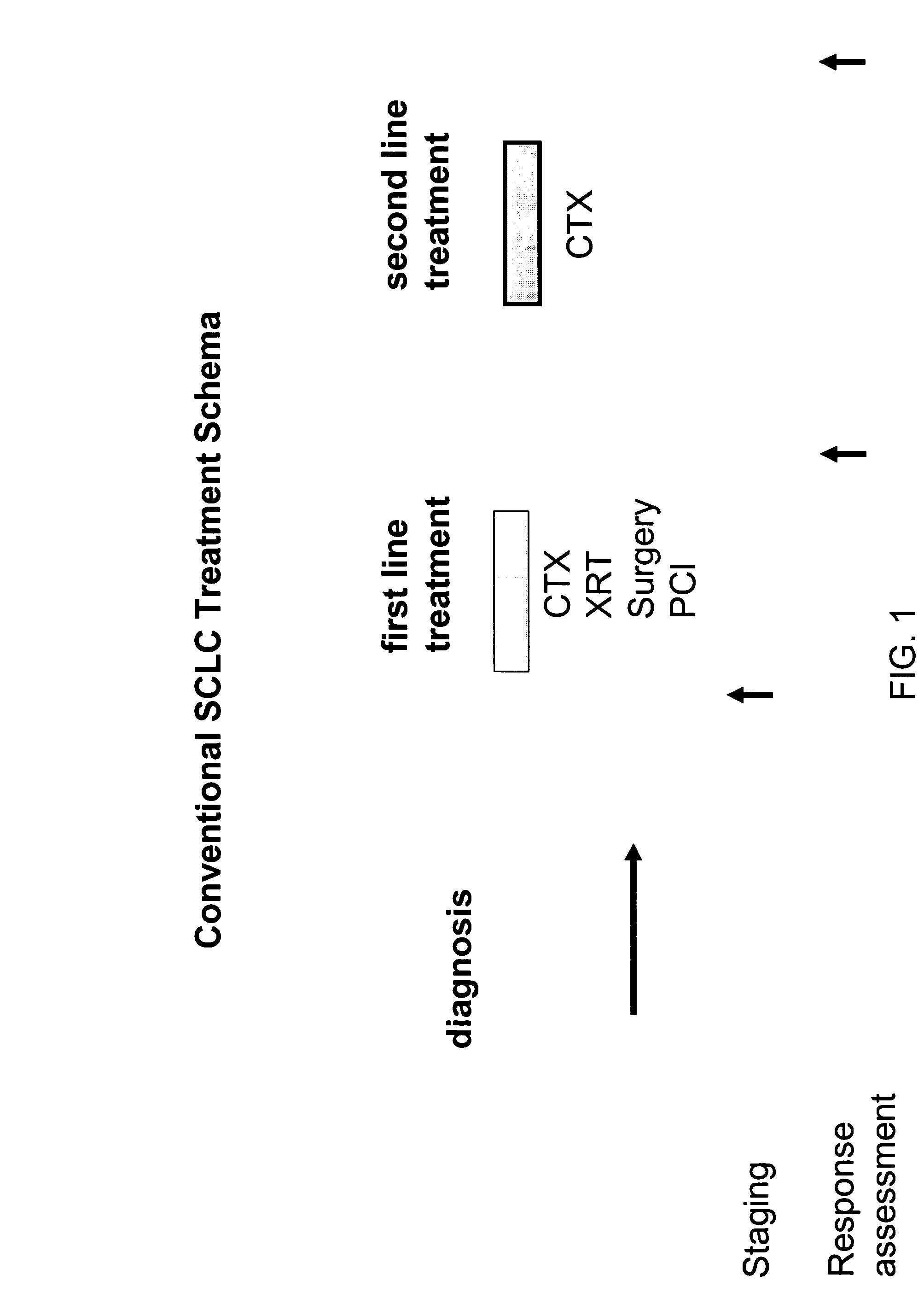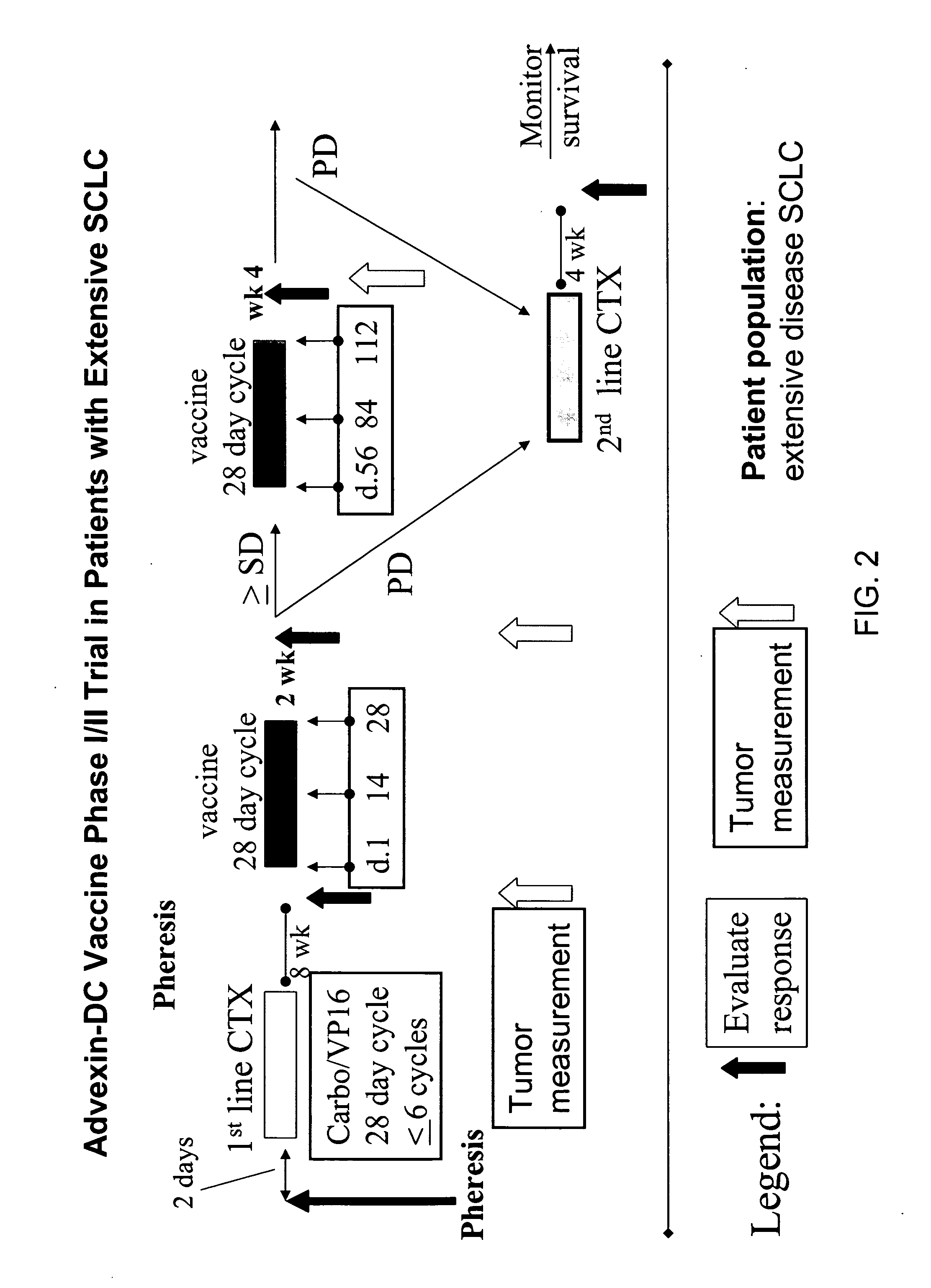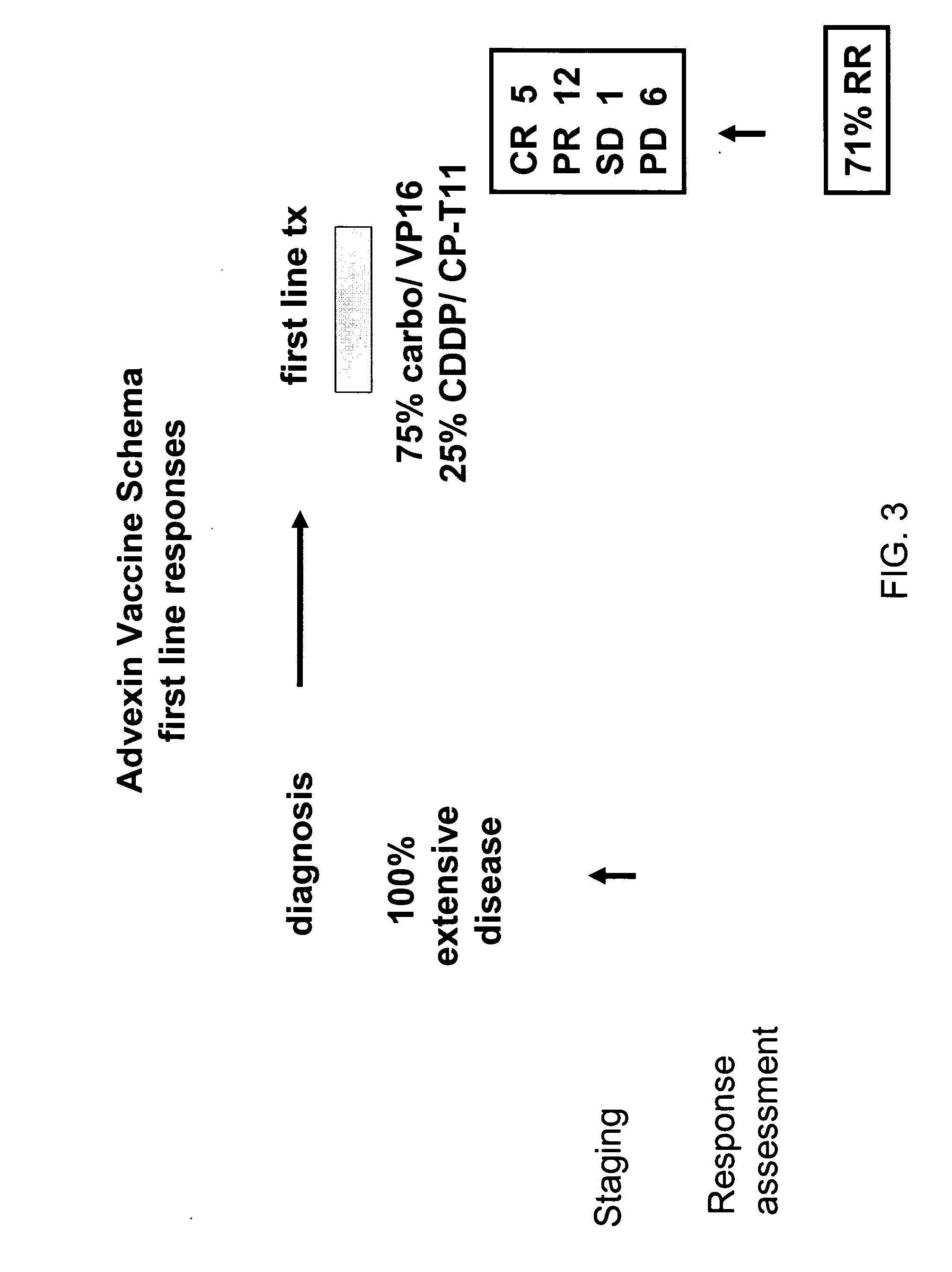P53 vaccines for the treatment of cancers
a cancer and p53 technology, applied in the field of p53 vaccines for the treatment of cancer, can solve the problems of reducing the survival rate of p53 cells, prolonging the half-life of p53 cells, and limiting the clinical response, so as to improve the outcome of cancer.
- Summary
- Abstract
- Description
- Claims
- Application Information
AI Technical Summary
Benefits of technology
Problems solved by technology
Method used
Image
Examples
example 1
Exemplary Advexin®-Dendritic Cell Studies
[0276] In specific embodiments, individuals with cancer are treated with methods and compositions of the present invention, such as, for example, dendritic cells comprising Advexin®. The cancer is resistant to at least one cancer treatment. The following description concerns exemplary embodiments only and may be applied to cancers other than small cell lung cancer (SCLC).
[0277] Patients with extensive stage disease (metastatic disease that has spread beyond the supraclavicular areas) may be de-bulked with chemotherapy (or surgery, or radiation, in specific embodiments), and then vaccinated with autologous dendritic cells transduced with Advexin®. Vaccines #1-3 are given every 2 weeks; patients are then staged (2 weeks after vaccine #3), and if no evidence of disease progression, are given an additional 3 vaccinations on a monthly schedule, for example.
[0278] Twenty-four patients have completed or are currently undergoing treatment. Most pa...
example 2
Exemplary Small Cell Lung Cancer Embodiment of the Invention
[0284] Although the methods and compositions of the invention are applicable to a variety of cancer types, in a specific and exemplary embodiment of the invention they are employed for treatment of small cell lung cancer (SCLC), which accounts for 20% of all lung cancers. SCLC is the most aggressive of any pulmonary tumor, with a 5-year survival rate of <5%. Without treatment, the median survival from diagnosis is 2-4 months.
[0285] Compared with other cell types of lung cancer, small cell carcinoma has a greater tendency to be widely disseminated by the time of diagnosis, but is much more responsive to chemotherapy and irradiation. However, the responses to therapy are generally short-lived, and disease recurrence is frequent. Platinum and etoposide combination chemotherapy remains the standard of care in SCLC, although epirubicin / cisplatin shows similar activity with slightly reduced toxicity. Triplet therapy, dose inten...
example 3
Exemplary Clinical Trial Outline
[0302] Between January 2003 and June 2005, 29 fully-evaluable patients for both immune response and clinical response were treated with the vaccine. All patients had ES SCLC at the time of vaccination (17 patients with newly diagnosed ES disease and 12 with relapsed disease; Table 4). The median age was 63 years (range 39-76). Twenty patients were vaccinated after only one prior chemotherapy regimen (six patients after two regimens, and three patietns after three regimens). All patients had received prior platinum therapy. Patient characteristics are listed in Table 4.
TABLE 4Patient CharacteristicsNo.%Total29100GenderM1345F1655AgeMedian63Range39-76Performance StatusECOG 0-12898(PS)ECOG 212Clinical StageExtensive1759Relapsed1241No. Chemo Regimens12069Before Vaccine2621≧3310No. Leukophereses11862≧21138No. Vaccines1332069>3828
[0303] DC were generated from peripheral blood mononuclear precursors and then infected with an adenoviral construct containing...
PUM
| Property | Measurement | Unit |
|---|---|---|
| Time | aaaaa | aaaaa |
| Time | aaaaa | aaaaa |
| Volume | aaaaa | aaaaa |
Abstract
Description
Claims
Application Information
 Login to View More
Login to View More - R&D
- Intellectual Property
- Life Sciences
- Materials
- Tech Scout
- Unparalleled Data Quality
- Higher Quality Content
- 60% Fewer Hallucinations
Browse by: Latest US Patents, China's latest patents, Technical Efficacy Thesaurus, Application Domain, Technology Topic, Popular Technical Reports.
© 2025 PatSnap. All rights reserved.Legal|Privacy policy|Modern Slavery Act Transparency Statement|Sitemap|About US| Contact US: help@patsnap.com



